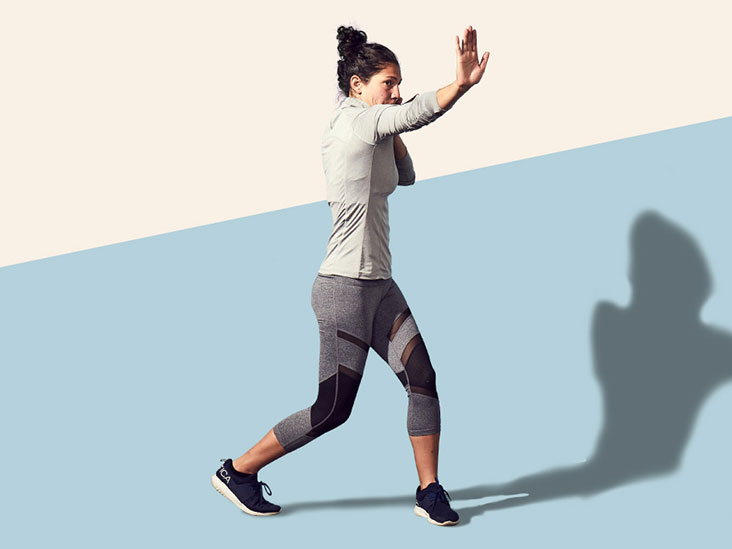
Self defense camps for girls can save lives. These classes are designed to teach girls how to respond to threats, physical attacks, or aggressive behavior. Students learn to face the attacker, control distance and use verbal assertiveness as effective self-defense moves. If you attend a self-defense camp for women, you will be better prepared to deal with real-life sexual assault. What are the options for choosing a self defense program for girls?
Joint lock arts is a type of self-defense
Joint lock arts, a form self-defense that keeps your attacker away until you get help, are an option. The goal of the Joint Lock is to prevent your attacker being able retaliate. But if you lack extensive training, it's pointless. You need to win the fight by using larger movements. It is best to avoid physical altercations.
There are many kinds of joint locks. Most common is the hyperextending one. These locks force the joint to move beyond it's range of motion, leading to pain. Joint locks can cause injury to ligaments, muscles, or even bones, depending upon the position and type of attacker. Brazilian Jiu-Jitsu is one example of a sport that uses joint locks.

Self-defense techniques for real sexual assault situations
Effective self-defense techniques are vital for situations of sexual assault. Rape, which is a violent attack, is usually the result of a rage-filled eruption. As the victim, it is important to remain calm and take control of your body. It is not uncommon for someone to target you based on the way you dress or behave. These simple guidelines can help you to protect yourself.
First, ensure that you are being attacked. The attacker may be far away and unaware of the aggressive level you've displayed. They may not see the extent and severity of your injuries or pain. The attacker is still responsible for their actions. If you are able to protect yourself in the worst case scenario, the situation will go away and the perpetrator will be forced to leave the scene.
The benefits of a self defense camp for girls
Self-defense training is something that all children should know. A self defence camp for girls will give them the tools to defend themselves and others. By teaching the basics of self-defense, these children can avoid dangerous situations in their everyday lives. They'll become more aware about their surroundings and will learn how they can protect themselves against attackers at all ages. Children will learn stress management skills that can help them cope with daily life.

The benefits of self-defense training for girls are enormous. Not only does it develop reflexes as well as the warrior spirit in young girls, but it also improves social skills. It teaches respect and tolerance to others. Self-defense training helps girls develop a balanced outlook on their lives. The self-defense training for girls helps young girls feel more confident, empowered, and independent. They also get a better sense of their own physical condition.
FAQ
Why Metabolic Well-being is the Key to Aging Well
People are living longer lives today than at any point in history. But as they do, they're also getting sicker. While medical science has made incredible advances, it's becoming increasingly obvious that the current approach is not working.
It's time to change our perceptions of health and aging. For healthy aging, it is important to look at metabolic well-being - not just weight reduction but overall wellbeing.
And if you want to live an active life for decades to come, you should ensure that your metabolism stays strong and healthy throughout your entire lifetime.
There are many options to improve your metabolic health. You can improve your metabolic health by incorporating these 7 foods in to your diet.
-
Resveratrol has been found to be a key ingredient in blueberries, and it has been shown that it can help increase cell longevity. They also provide antioxidants and vitamins C & E.
-
Pinto beans and lentils are great sources of fiber and plant-based proteins. These nutrients are important for maintaining blood sugar levels that don't spike, crash or change.
-
Broccoli's sulforaphane has been shown to protect DNA from damage in research. It may even slow down the progress of cancer.
-
Chia Seeds are high-in omega-3 fatty acids, fiber, and other nutrients. They are also high in antioxidants and proteins. All these nutrients support heart health, brain function and gut health.
-
Green Tea contains polyphenols called catechins. The catechins in green tea have been linked to reduced bone fractures, cardiovascular disease, cognitive decline, and diabetes risk.
-
Salmonis one of the best sources of lean protein, low in saturated fat, and packed with vitamin D.
-
Walnuts contain omega-3s and antioxidants like alpha lipoic acid (ALA). ALA boosts energy production and reduces inflammation.
What is a good seven-day workout routine?
A seven-day exercise program should consist of three days per week of cardiovascular training (running, biking, swimming), two strength exercises (using free weights, weight machines), and one flexibility/core workout (yoga, Pilates). It's essential to do each activity at least once a week. Each session should not last more than 45 minutes.
Cardiovascular Exercises: Swimming, Cycling, Running
The goal is to get in at least 60 minutes of cardio activities per week. You can aim for 75 minutes a week for best results. Cardio exercises can increase blood flow and stimulate the growth of muscles.
Strength Training
Cardio exercises target your heart and lungs. Strengthening your muscles and bones is the opposite. Strength training helps you burn calories even while resting.
Flexibility and core workouts
To strengthen your whole body, flexibility and core work outs are excellent ways to do so. Both yoga or Pilates are great options.
Do I have to exercise every single day?
No! Get at least 30 minutes of moderate-intensity physical activity 5 days a week. This means that you should be able to walk fast enough to feel slightly out of breath, or bike hard enough to sweat.
Statistics
- Get free shipping and 25% off today. (healthline.com)
- According to the American Heart Association, blood pressure should be checked at least once every two years, beginning at age 20. (my.clevelandclinic.org)
- By John Thompson Take a whopping 38% off a set of PowerBlock Pros. (menshealth.com)
- Candidates and applicants must pass all four tests at 70% (minimum level) to graduate from Basic Deputy U.S. Marshal (BDUSM) Training. (usmarshals.gov)
- Cardmembers earn 5% Back at Amazon.com with a Prime Credit Card. (amazon.com)
External Links
How To
How do I lose weight while working out?
Exercise burns calories through increased metabolism and oxygen consumption.
At moderate intensity, you will lose weight easily.
To burn fat while exercising, follow these tips:
-
Cardio exercises include swimming, running or cycling.
-
Exercise for 30 minutes three times per week.
-
Add strength training to your workouts if you are looking to lose more weight.
-
Avoid intense training. It's possible to build muscle, but not lose it.
-
During exercise, drink plenty of water. Water flushes out toxins, and keeps your body properly hydrated.
-
After exercising, consume low-fat protein smoothies. Protein shakes are great for your muscles and energy.
-
Take smaller meals throughout each day to avoid feeling hungry.
-
Don't skip breakfast! Skipping breakfast can lead to fatigue and sluggishness.
-
Mental health is important. Stressful situations can slow down metabolism.
-
Keep a positive attitude. Studies show that people who believe they are overweight gain more weight then those who think they are attractive.
-
Sleep enough. You will have a harder time losing weight if you do not get enough sleep.
-
Be active. Keep moving every hour.
-
Maintain a healthy diet. Healthy eating will keep you fuller and more satisfied for longer.
-
Find relaxation techniques. Your body won't release stress hormones that cause muscle tissue destruction if you have a tense mind.
A balanced diet will provide all nutrients that are necessary for growth.
Consider eating six small meals daily instead of three big ones. This allows your body to properly digest what you have eaten.
Calcium is required to support strong bones. Calcium is found in dairy products like yogurt, fortified milk beverages, orange juices, cereals and bread.
Calcium is found in green leafy vegetables, beans, tofu, seeds, nuts, and cheese.
Your body needs vitamin D to absorb calcium. Vitamin D is found in eggs yolk, fatty fish and fortified foods.
Vitamin E is important for skin health. It can be found as a vegetable oil, wheat germ, peanuts or almonds.
Zinc is essential for healthy immunity and wound healing. Zinc can be found in seafood, legumes and meats.
Zinc deficiency may cause fatigue, loss appetite, depression, and impaired immunity.
Too much sugar leads to insulin resistance. This results in higher blood glucose levels. Insulin resistance leads to weight gain.
Insulin resistance develops when there are high levels of free radicals in the bloodstream. Free radicals refer to molecules that contain unpaired electrons. They can damage cell membranes and other body parts.
The most common sources of free radicals include food additives.
Free radical damage may lead to cancer, heart disease diabetes, arthritis, asthma and other conditions.
The best way to avoid free radicals is to eat a balanced diet high in antioxidants. Antioxidants protect against oxidative damage.
Antioxidant vitamins include Vitamin C (found in citrus fruits), beta carotene (found in carrots, sweet potatoes, spinach, broccoli, cantaloupe, apricots, squash, mangoes, peaches, peppers, tomatoes, cabbage, cauliflower, kale, Brussels sprouts, collard greens, watermelon, and strawberries), and Vitamin E (found in nuts, olive oil, avocados, and eggs).
Additional antioxidant nutrients include selenium and copper, manganese and zinc.
Selenium helps protect cells from oxidative damage caused by free radicals. Selenium can also be found in Brazil nuts (tuna), liver, kidneys and shrimp.
Copper protects the brain and eyes as well as the lungs and red blood cells. Copper is also found in poultry, meat, and organs.
Manganese plays an important role in bone structure. Manganese can also be found in oatmeal, brown rice, spinach and bananas.
Zinc is important for healthy growth, reproduction, and wound-healing. Zn is found in lean cuts of meat, white fish, poultry, and eggs.